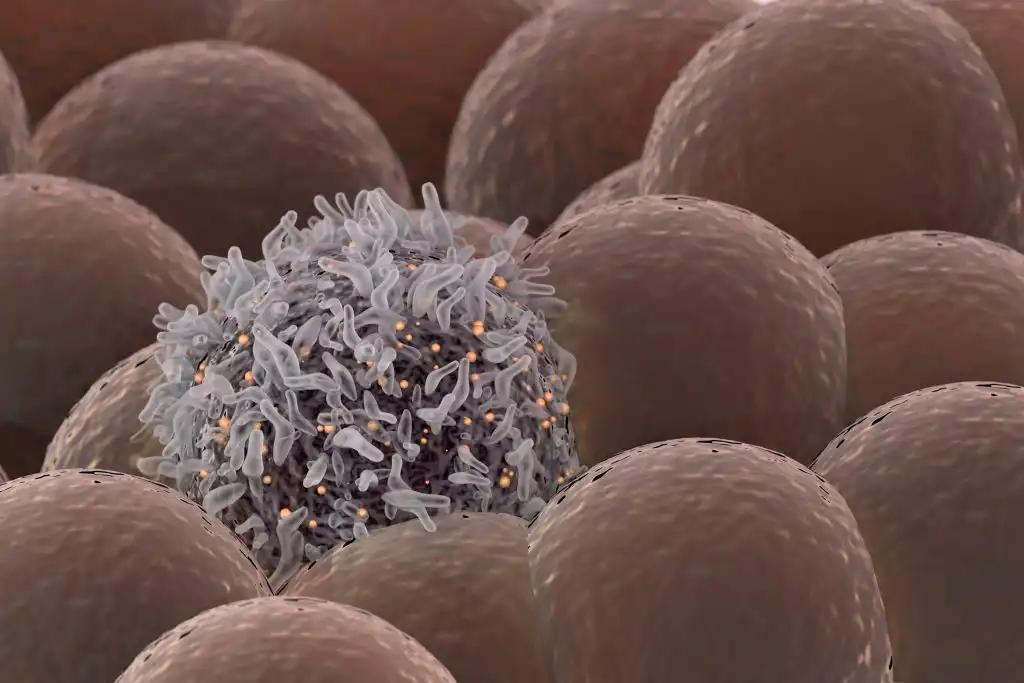KEY TAKEAWAYS
- The study aimed to evaluate the use of novel peptide-based PET tracer 68Ga-NOTA-XH05 in assessing LAG-3 expression in melanoma post-CpG oligonucleotide treatment.
- The study highlighted 68Ga-NOTA-XH05’s potential in detecting LAG-3 and assessing immunotherapy response.
Lymphocyte activation gene 3 (LAG-3) is generally expressed on activated immune cells and has emerged as a promising target for immune checkpoint blockade. However, inconsistent results have been reported corresponding to the association between patient prognosis and LAG-3 expression in tumors. This indicates the urgent need for digging deeper to unveil the role of LAG-3 expression levels in melanoma therapies.
Peizhe Yuan and the team aimed to investigate the utility of the novel peptide-based positron emission tomography (PET) tracer 68Ga-NOTA-XH05 in non-invasively detecting LAG-3 expression in melanoma after CpG oligonucleotide treatment.
Researchers prepared, purified, and identified 68Ga-NOTA-XH05 by high-performance liquid chromatography and performed the cell uptake and blocking assays to verify the specificity of the tracer, in vitro.
The expression analysis of LAG-3 in B16-F10 subcutaneous tumors was evaluated by flow cytometry, the tracer uptake was utilized for establishing a correlation between LAG-3 expression and tracer uptake for the affirmation of the tracer specificity.
Further PET imaging and biodistribution studies post-CpG treatment of unilateral or bilateral B16-F10 subcutaneous tumorigenated subjects were executed for the assessment of the ability of 68Ga-NOTA-XH05 in immunotherapy efficacy monitoring and the abscopal effect of CpG.
Results revealed that following purification, 68Ga-NOTA-XH05 exhibited high radiochemical purity and specificity. Flow cytometry analysis demonstrated a positive correlation between LAG-3 expression in tumors and the uptake of 68Ga-NOTA-XH05. This finding supports the tracer’s potential for targeting LAG-3 expression in melanoma.
In B16-F10 tumorigenated subjects treated with CpG, PET imaging using 68Ga-NOTA-XH05 showed a higher tumor-to-blood ratio (TBR) compared to the control group. The increased TBR values in CpG-treated tumorigenated subjects were significant enough to differentiate between responders and non-responders. This suggests that 68Ga-NOTA-XH05 may be an effective tool for monitoring the efficacy of CpG immunotherapy.
Furthermore, in a bilateral subcutaneous tumor line where only the right-sided tumors received an intratumoral injection of CpG, the TBR values of the left-sided tumors were significantly higher than those in the control group. This indicates that 68Ga-NOTA-XH05 could effectively monitor the systemic effects of local CpG injection, demonstrating its potential utility in assessing the abscopal effect in melanoma treatment.
The study concluded by highlighting the capability of 68Ga-NOTA-XH05 in the detection and assessment of LAG-3 expression levels within tumors and evaluating response to immunotherapy, thus hinting at a promising clinical translational implication.
This study was funded by the National Natural Science Foundation of China (81801738, 82030052), the Hubei Provincial Natural Science Foundation (2022CFB063), and Key Research and Development Program of Hubei Province (2023BCB016).
Source: https://pubmed.ncbi.nlm.nih.gov/39043603/
Yuan P, Long Y, Wei N, et al. (2024). “Peptide-based PET tracer targeting LAG-3 for evaluating the efficacy of immunotherapy in melanoma.” J Immunother Cancer. 2024 Jul 23;12(7):e009010. doi: 10.1136/jitc-2024-009010. PMID: 39043603.



